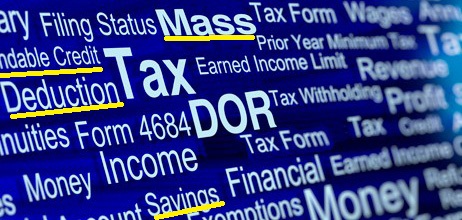For the past few months, Massachusetts has been embroiled in a battle over a proposed state sales tax on software services. In a never-ending search for more revenues, the new tax was included in by Governor Deval Patrick in his January 2013 budget proposal. The terms of the tax as passed in July were expected to raise about $160 million per year, with a goal of helping to plug a funding shortfall in the transportation budget.
Software is a big business in Massachusetts, and the negative reactions were both immediate and strong. In recent days, both the MA House and Senate have voted to repeal the tax. Patrick has signaled he no longer supports the tax either, and is expected to sign the repeal into law.
A lesson one could take from this incident is that democracy works, particularly when legislators pass an unpopular tax with little coordination with the affected parties. This take on the situation is correct, of course. But it is also incomplete. In principle, broadening your sales tax base, including the taxation of both goods and services, is a fine idea. In fact, the more services one can include, the more possible it will be for a state to actually lower its present sales tax rate -- thereby reducing the tax-related distortions to economic activity. Reducing tax exemptions, such as on internet sales, is another part of this strategy. The present system, where most people pay no taxes on internet purchases, unfairly disadvantages brick-and-mortar businesses in state, though the latter both hire local people and pay local taxes.
Plow the field of tax breaks first

There are a number of other takeaways from the software tax debacle that are important.
First, make sure you know what you are doing. Otherwise, the legislative language casts a broad net that enmeshes many unintended parties. Even providers who ultimately determine they need not pay the tax (or need pay only very little) often incur high tracking and administrative costs in order to reach that conclusion.
Second, a new type of tax is always more palatable (and less distortionary) if it is deployed with as low a rate as possible, and across many sectors at once. Tagging only software services with the full 6.25% MA sales tax rate was probably not a very good strategy -- particularly given how many small firms were affected, and the possibility of consumers bypassing the tax by buying from other states.
The most important lesson from Patrick's latest attempt to implement new taxes is that he can find valuable lesson ideas in the Massachusetts Tax Expenditure Budget. Consider it the "Cliff Notes" of increasing revenues. Yet, unlike new taxes, which can disproportionately harm one or two sectors, the removal of existing tax subsidies can often make the marketplace more fair. As noted below, tax breaks for energy are common, and removing these has the additional benefit of more effectively aligning the state's environmental and fiscal policies.
As Governor Patrick is looking hard for ways to make up the $161 million in tax revenue the software service tax repeal will remove from state coffers, here are some ideas:
Filling Revenue Shortfalls in Massachusetts, by the Numbers
What Deval Patrick is trying to get back: lost revenues from killing the software services tax
$161 million - Expected revenue from poorly-structured software services tax
Narrowing tax expenditures offers a cleaner way to right the state's fiscal ship
$26,600 million - Total FY2013 tax expenditures quantified for Massachusetts. Not all of them warrant removal, but there are lots to choose from that do.
Filling the void: ending tax breaks for energy consumption. Utilities already have a number of programs to ensure the poor have access to basic energy services. There is no need to subsidize all consumers; consuming energy should be subject to the same sales tax as any other good. Current incentives reduce the incentive for consumers to invest in more efficient energy appliances and demand reduction.
$585 million - Value of tax exemptions in FY2013 for Massachusetts consumers using fuel oil, natural gas, propane, steam, and electricity.
$46 - Annual per capita savings by making electricity, even from polluting sources, free from taxation.
$59 million - tax exemption for fuel used in operating aircraft and railroads.
Filling the void: treating film like a normal industry. Yeah, it's cool to see Boston landscapes in movies. But not nearly as cool as being able to fix our roads and bridges, and support our public schools with state grants.
4 - Number of separate tax breaks Massachusetts has for the film industry.
$82.6 million - FY 2013 revenue loss from the largest of the film industry tax subsidies, the corporate tax credit for payroll and non-wage production (item 2.614). These tax credits are freely transferable, great for out-of-state firms that otherwise have no MA tax on which to use the tax credit.
$0.97 million - Average savings per film company using the film industry tax break above.
Filling the void: broader-based taxation of internet services. A software services tax unfairly punished one sector, but a tax on our consumption of internet services would be easy to implement and place the sector on more equal footing with other goods and services consumed in the state. More detail on exactly what federal law requires (and why) would be needed in order to remove this tax subsidy item.
$147 million - FY 2013 revenue loss from tax exemption granted for internet access and related services (e.g., web hosting). The State notes that this subsidy is provided so the state is "in conformity with federal law." Lifeline access for the poor does not seem a driver: telephone services are similarly exempt, but only up $30/month. At the very least, a similar approach could be used for internet services.